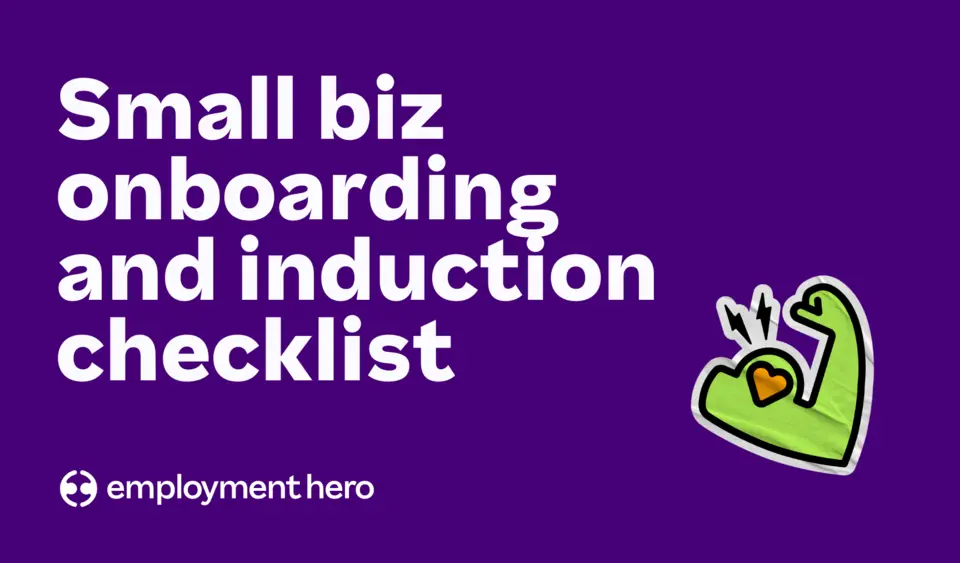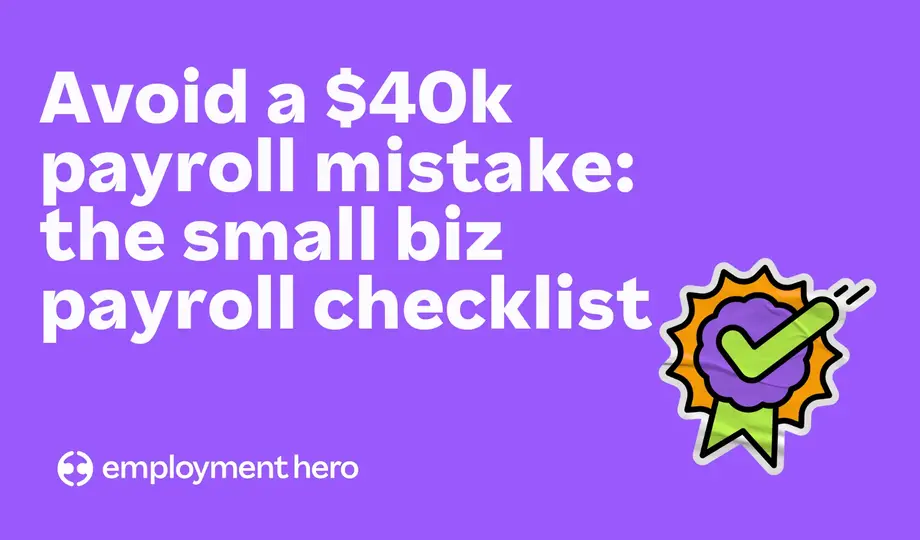One on One Meeting Template [Free Download + Guide]
Published
One on One Meeting Template [Free Download + Guide]
Implementing 1:1s can be the difference between building a good team and a great team. If you’re ready to reap the benefits of 1:1s because you’re aware that communication is one of the most important pieces of the high-performance-puzzle, this guide is for you.
Discover the secret to building a high-performing and engaged team with effective 1:1s. These meetings can be the difference between a good team and a great one. Learn how to harness the power of 1:1s to drive communication, engagement and productivity within your organisation.
What’s in the guide?
- The foundations of internal communication
- Decoding 1:1s – what they are and why they matter
- How to run an effective 1:1
- The art of giving feedback
- Elevating engagement and career development
- The power of flexibility in 1:1s
Download the guide now.
What do the templates include?
The 1:1 meeting template has editable sections that can be customised to your company’s needs.
It can be used as a meeting agenda template, as it includes some sample questions you can ask during your next meeting with your team member.
These questions are focused on gauging employee engagement and probe further discussion to aid career development for your direct report.
What are 1:1s?
Effective 1:1s contribute to all of the elements of improving employee performance. It allows for:
- A safe communication space
- Career discussions
- Linking to broader organisational goals
- Space to check-in
- Relationship building
- Idea sharing
- Listening
- Feedback
A 1:1 is a scheduled meeting in your calendar and in your mental map for open-ended and anticipated conversation between a manager and an employee.
Unlike status reports or tactical meetings, a 1:1 meeting is a place for coaching, mentorship, giving context or even venting.
The 1:1 goes beyond an open door policy and dedicates time on a regular cadence for teammates and leaders to connect and communicate.
Why are 1:1s so important?
1:1s can strengthen the relationship between managers and their team, reduce turnover and increase productivity. For 1:1s to be as effective as possible, they should adhere to three key things:
- Scheduled
- Recurring
- Structured
Not only do 1:1s serve to strengthen professional relationships, they contribute to improved communication and trust within the business, a great benefit for any workplace. By having a transparent relationship with your direct report(s), you’ll be able to understand how they’re feeling. Whether they’re feeling anxious about an upcoming project or need some assistance with a task, 1:1s help you as a manager, support your team.
Additionally, 1:1s aren’t just for determining roadblocks or challenges in the workplace. Use this time to find out if your direct report(s) are feeling happy, inspired and engaged with their work. This is important for managers for them to manage their direct report(s) effectively and put strategies in place if something requires attention.
Before we continue, ask yourself these two questions.
- When was the last time you checked in with your direct report(s)?
- How do you effectively manage someone you aren’t regularly checking in with?
Let’s take a look at this scenario:
Your direct report is completing great work, so you assume they’re loving their role. However, one month later they resign from their role and you feel blindsided and confused. You assumed that they were working long hours because they loved what they were doing; however, this was not the case. In the exit interview, they reveal that they were feeling extremely burnt out and underappreciated in their role, so when the opportunity came about to jump ship, they did.
We’ve all seen this scenario time and time again, and it’s something that we believe can be avoided with better communication. If you knew that your direct report was feeling under-appreciated, you could have taken the appropriate action to reward and recognise their efforts. If you knew that they were feeling burnt out, you could have reduced their workload, expanded the team or encouraged them to take leave.
At the end of the day, poor communication can be detrimental to business success. To decrease your risk of losing top talent, we suggest that you implement 1:1s, pronto!
How to run an effective 1:1
A well-structured approach can greatly enhance the effectiveness of one-on-one meetings. Follow these steps will ensure your sessions are productive and meaningful.
Step 1: Prepare in Advance
Effective preparation is essential. Both parties should come with a meeting agenda that includes topics, questions, and updates on previous action items. For a first-time one-on-one, set a welcoming and respectful tone that encourages openness. For recurring meetings, review past notes to track progress and ensure a focused discussion.
For example, an HR manager could review the employee’s recent performance data, highlight areas for discussion, and prompt the employee to reflect on their challenges and accomplishments.
Step 2: Set a Comfortable Environment
The location of the meeting plays a key role in its success. Opt for a quiet, private space to maintain confidentiality and avoid distractions.
For instance, a supervisor might book a conference room or suggest a walk outside to create a relaxed, open environment conducive to candid conversation.
Step 3: Foster Open Discussion and Active Listening
Start by reviewing the meeting agenda, then dive into key discussion points. Encourage open dialogue by asking open-ended questions and listening attentively to the responses.
A manager might ask, “What support do you need to reach your current goals?” This promotes a two-way conversation and shows that the employee’s input is valued.
Step 4: Recap and Define Action Items
Conclude the meeting with a summary of the key points discussed, agree on actionable next steps, and set deadlines for any tasks.
For example, if an employee is interested in further professional development, the manager could assign them to explore available courses and schedule a follow-up meeting to decide on next steps for enrolment.
What questions could you ask in a 1:1?
It’s important to have a list of questions ready for your 1:1. If possible, ask your direct report(s) to fill them out before your meeting so that you can both come prepared. This will make sure that you stay on track and get the most out of your session.
If you’re looking for a bunch of questions to add to your team check-ins, then we’ve got 105 questions you could ask in a 1:1 meeting.
The benefits of 1:1s
The benefits of a 1:1 are numerous and have a significant impact on both individuals and the overall team dynamics within an organisation. Here are some key benefits of conducting regular 1:1 meetings:
Improved communication
1:1s provide a dedicated space for open and honest communication between a manager and their team member. This fosters transparency, trust and a deeper understanding of each other’s perspectives, leading to better collaboration and a smoother workflow.
Increased employee engagement
Regular 1:1s demonstrate that managers value their team members’ input and well-being. This sense of support and attention to individual needs can significantly boost employee engagement and job satisfaction.
Enhanced productivity
By addressing challenges, roadblocks and concerns on time, 1:1s help remove obstacles that might hinder productivity. The meetings also serve as a platform for setting clear goals, aligning expectations and providing the necessary resources for success.
Building trust and professional relationships
The confidential and supportive environment of 1:1s encourages team members to share their thoughts, concerns and aspirations openly. This builds trust between managers and employees, fostering stronger professional relationships and loyalty to the organisation.
Career development and growth opportunities
1:1s offer a dedicated forum to discuss career aspirations, skills development and advancement opportunities. This proactive approach to career growth empowers employees to take charge of their professional development and helps keep valuable talent within the organisation.
Real-time feedback
1:1s facilitate ongoing feedback, enabling managers to provide timely guidance and recognition for accomplishments. Constructive feedback, when given promptly, helps employees make the necessary adjustments and improve their performance.
Alignment with organisational goals
During 1:1s, managers can make sure that their team members’ efforts align with the broader objectives of the organisation. This ensures everyone is working towards common goals, driving the overall success of the company.
Effective problem-solving
1:1s offer a platform to address and resolve issues, conflicts and concerns before they escalate. Managers can work collaboratively with team members to find effective solutions and prevent potential challenges.
Employee well-being
By actively listening to team members’ well-being and stress levels, managers can identify signs of burnout and take necessary measures to support their employees’ work-life balance and overall well-being.
Continuous improvement
The flexibility and adaptability of 1:1s allows for ongoing improvement in communication styles, meeting formats and approaches to addressing individual needs. This iterative process makes sure that 1:1 meetings remain relevant and effective over time.
The art of feedback
Day-to-day feedback happens organically during conversations — for example: “Alex, I think you could improve your knowledge on this by speaking to Dave”. However, if you’re looking to give more structured feedback in real time but you can’t directly talk to the person, document it. Once documented in a central place, you can:
- Pick a time and a medium for feedback. There are certain types of feedback that you are best to give in a conversation (by video or in-person).
- Decide whether this feedback might be taken the wrong way if not given in a conversation.
Employment Hero is here to help
Embrace the potential of 1:1s to transform your team and drive business success. By implementing strong internal communication and running effective 1:1s, you’ll nurture engaged employees, boost productivity and foster a thriving workplace culture.
Don’t miss out on this opportunity to elevate your team and achieve unparalleled results. Unlock the power of effective 1:1s today by downloading our guide.
Interested in learning more about how the Employment Hero platform could help you run more effective 1:1s? Reach out and speak to a member of our team today.
Other helpful resources:
- How to deal with bad managers in your team
- 1:1 Mid-Year Performance Check-In Template
- HR Masterclass: How to implement effective 1:1s
- Meeting Minutes Template
- Running effective 1:1s
Related Resources
-
 Read more: Hiring Issues Holding You Back? The Business Owner’s Guide to Competing for Top Talent
Read more: Hiring Issues Holding You Back? The Business Owner’s Guide to Competing for Top TalentHiring Issues Holding You Back? The Business Owner’s Guide to Competing for Top Talent
Published 1 min read Hiring great people is one of the most powerful ways to grow your business – but…
-
 Read more: Dodge Thousands in Fines, Keep Great Staff: Onboarding Checklist
Read more: Dodge Thousands in Fines, Keep Great Staff: Onboarding ChecklistDodge Thousands in Fines, Keep Great Staff: Onboarding Checklist
If you run a business with under 10 staff, this onboarding checklist will help you get the most out of…
-
 Read more: Avoid a $40K Payroll Mistake: The NZ Small Biz Payroll Checklist
Read more: Avoid a $40K Payroll Mistake: The NZ Small Biz Payroll ChecklistAvoid a $40K Payroll Mistake: The NZ Small Biz Payroll Checklist
Think payroll mistakes don’t matter? For businesses with under 10 staff, even small slip-ups can lead to fines of up…










